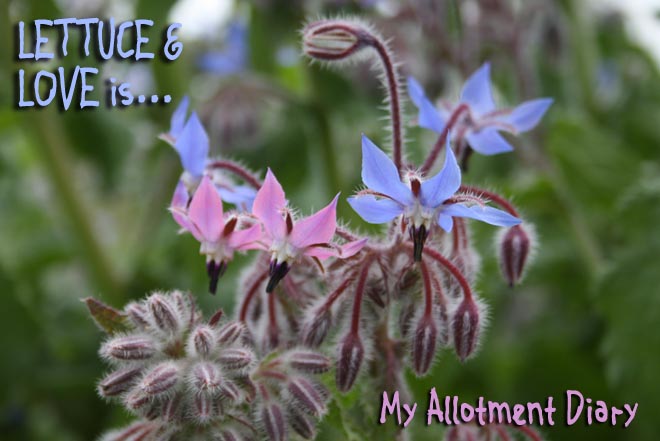
As it was after the big chop...

As it is now, March 2009
Contrary to what some think I have dug every square foot of the plot so far - not just where the beds are placed.
If you need tips about clearing and burning weeds:-
- I recommend putting the weeds on a pallet rather than into a bag or bin or straight on the ground. This way the air circulates and they dry, as they dry the soil falls off - of course I covered them with plastic when it was going to rain! - well most times! The first load of weeds I dug up I put in one of those spring-up bins - they are still there, sodden with soil and no good for burning. I shall tip them out onto the pallet the next sunny day I go down and get them dry and ready to burn.
- Cover weed piles up when it's really windy or you may upset your neighbours by scattering weeds over their plots.
- Bonfires on allotments have to be well considered. It's common sense really. I am close to a playground where I take my little under-gardener, so I won't burn when the wind blows in that direction or towards any houses, especially those with open windows!
- May to September are mostly no no months for fires.
- Don't forget November 5th is the best of all days for a blaze!
- A still day is perfect for burning - but also pretty hard to come by. So I choose a cold and/or spitting day when I wouldn't really want to be outside.
- Weekdays are better than weekends as less people are at home enjoying their own gardens.
- My top tip is get the fire hot hot hot. It smokes much less the hotter it is. Get it started with timber kindling of some sort is good.
- Fed it little by little and don't be tempted to stir or poke it as you'll could collapse in necessary air pockets.
- Obviously green, wet and soil covered weeds smoke the most so take note of the first tip.
- Use the ash and feed your beds potash, valuable potassium (K) fertiliser. The perfect cycle of weeds to fertiliser. Bad becomes Good.






